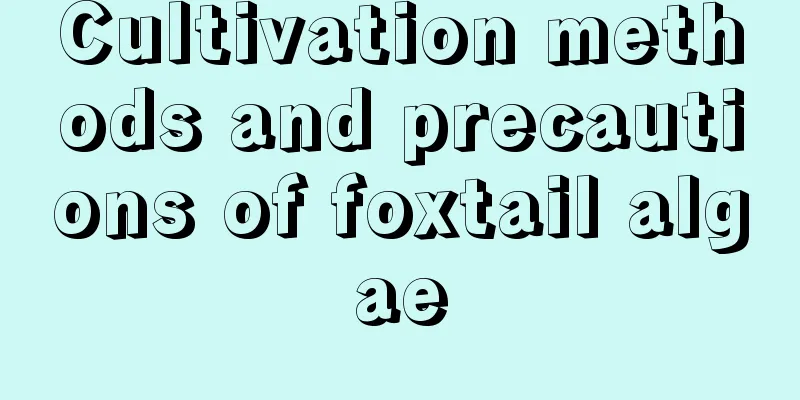It’s terrible if the flowerpot is too deep. Every time I grow a long-lived Clivia, it dies. Change it quickly!

What are the consequences of an inappropriate flower pot?1. Large pot for small seedlings The flowerpot is too big and the plant is small, so it cannot get enough sunlight, drainage is slow, water and fertilizer are difficult to control, growth is slow, and it is particularly easy to cause waterlogging and root rot. 2. Large seedlings and small pots It is easier to understand the problem of small seedlings in large pots. First, the roots cannot expand, which inhibits growth. Second, there is insufficient nutrients, and the branches, leaves and roots compete for water and nutrients, which eventually leads to sparse and yellow leaves, small and few flowers, pale flowers, or even no flowers. Clivia - Shallow pot plantingClivia is a fleshy plant with aerial roots, which has high requirements for root respiration and air permeability of the flowerpot, so it is generally planted in a shallow pot. 1. Data reference The data is for reference only and should be judged based on the size of the flower pot and the volume of the plant. 1 leaf seedlings, 4-6 plants per plant in a 10cm pot; 2-3 leaf seedlings, plant 2-3 plants in a 10cm pot; For large seedlings with 3-5 leaves, plant each one in a 10cm pot; For large seedlings with 5-8 leaves, plant each in a 13cm pot; For large seedlings with 8-10 leaves, plant each in a 16-20cm pot; For mature plants with 10-15 leaves, plant each plant in a 20-23cm pot; Mature plants with 15-20 leaves are planted in a 26cm pot. For mature plants with 20-25 leaves, each plant should be planted in a 33-40cm pot. 2. If the roots don’t support the pot, the flowers won’t be strong. Clivia has aerial roots. After the roots are placed on top of the pot, they will create a certain amount of space, which is more conducive to breathing and growth, resulting in abundant flowering and bright colors. In addition, plants with shallow roots such as money tree, tiger skin plant, green radish, ivy, and plants with sensitive roots such as kalanchoe, succulents, and cacti are best grown in shallow pots. Orchids - Plant Deeply First and Then ShallowlyOrchids are single-rooted and have no fibrous roots. They prefer a breathable and loose environment, but they also have pseudobulbs, which not only store water and nutrients, but also are related to germination and seedling growth. Therefore, the depth of the flowerpot should take into account the needs of the root system and pseudobulbs. 1. Plant deep first and then shallowly First plant the orchid deeply to allow the pseudobulb to fully contact the planting material to allow more germination and seedlings to emerge. However, the high temperature and high humidity environment in the soil is prone to seedling rot. What should we do? After the orchid seedlings grow out, remove some of the planting material to expose part of the pseudobulb, which can reduce the chance of infection. 2. Deep planting in the north and shallow planting in the south The climate in the north is dry, and the pseudobulbs are exposed outside, which is not conducive to germination and growth. The surface of the pot is dry and the bottom is wet, so it is not easy for new seedlings to take root. The climate in the south is humid and suitable for shallow planting. 3. Shallow planting for mud materials and deep planting for granular materials Clay has poor air permeability and is suitable for shallow planting. Granular materials are loose and breathable, so it is better to use deep pots. Azalea - Shallow Pot PlantingThe root system of azalea is very shallow. It has no main root system, but it has many fine fibrous roots, which are mainly clustered in the upper and middle parts of the soil and are not suitable for deep rooting, so it is best to plant it in a shallow pot. Note: A 10cm clay pot can be used for azalea cuttings, and it should be replaced with a 15cm pot after one year. Other woody flowers suitable for planting in shallow pots include: jasmine, camellia, gardenia, osmanthus, etc. They can only bloom vigorously if planted in shallow pots! Chlorophytum and Asparagus fern - deep or shallowChlorophytum has a well-developed root system and is generally grown in a deeper pot, but Chlorophytum is hardy and can grow in either a deeper or shallower pot. Shallow pots will overgrow quickly, so it is best to repot them once a year. Petunia, pansy——Large shallow potHerbaceous flowers such as petunia, geranium, verbena, and pansy grow fast and easily burst out of the pot. It is best to grow them in large-diameter shallow pots. Just scatter a handful of seeds and they will burst into balls. Lucky tree - deep pot plantingIt is best to use taller and deeper pots for large and beautiful foliage woody plants, such as the lucky tree, kumquat, Schefflera, and Umbelliferae, which require no worry and are easy to manage. Note: When planting in a deep pot, the bottom of the pot should be breathable and the soil should not be filled up. For daily maintenance, water less, ventilate more, and spray water more often. When you don’t know what to plant in a deep pot, use it as a cover pot, you can never go wrong! |
>>: Christmas cactus amaryllis... blooms 3 or 4 times a year, how does it do that?
Recommend
How to propagate California poppy
How to propagate California poppy: sowing seeds S...
How many times a year is black corn planted?
Black corn is a special type that contains precip...
Home cultivation methods and precautions for nail orchids
Farming methods Soil selection The soil generally...
Camellia cultivation methods and precautions
1. Breeding methods 1. Pot and soil: The flowerpo...
When is the best month to plant Sunshine Rose grape seedlings?
Sunshine Rose grapes have rich sweetness, mellow ...
How many years does it take for the old crow to bear fruit?
The results of planting old crow for several year...
Maintenance methods of Photinia fraseri in winter
Photinia fraseri should be protected from freezin...
Can Jade Plant be hydroponically cultivated? Hydroponics methods and precautions
Can jade tree be hydroponically cultivated? Jade ...
How to grow orchid flowers
1. Soil When breeding, you need to use soil that ...
What are the cultivation methods and precautions of hydrangea
Hydrangea cultivation method Hydrangea belongs to...
Cultivation methods and precautions of succulent fire festival
The succulent plant Fire Festival is super hardy ...
Cultivation methods and precautions of lucky bamboo cage
1. Lighting It generally prefers scattered light ...
How to cultivate winter red
Environment selection The locations for breeding ...
What flowers can be watered with fresh willow branches soaked in water
Fresh willow branches soaked in water to water fl...
What is the language of azalea and what is its meaning?
1. Flower Language 1. Forever belong to you: Acco...









